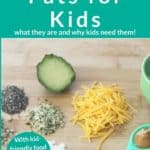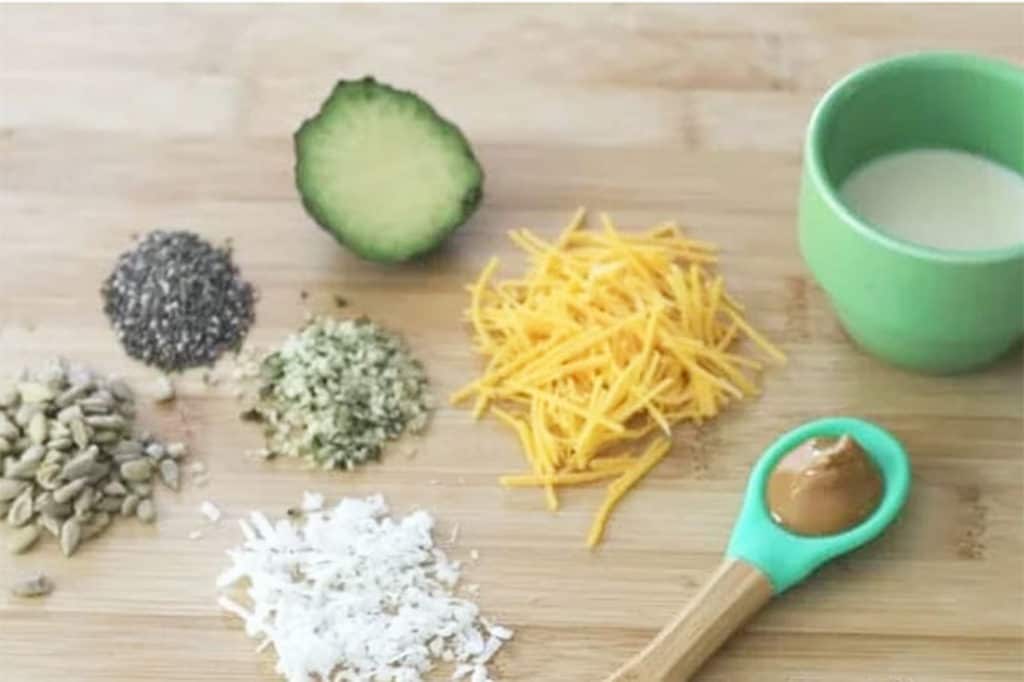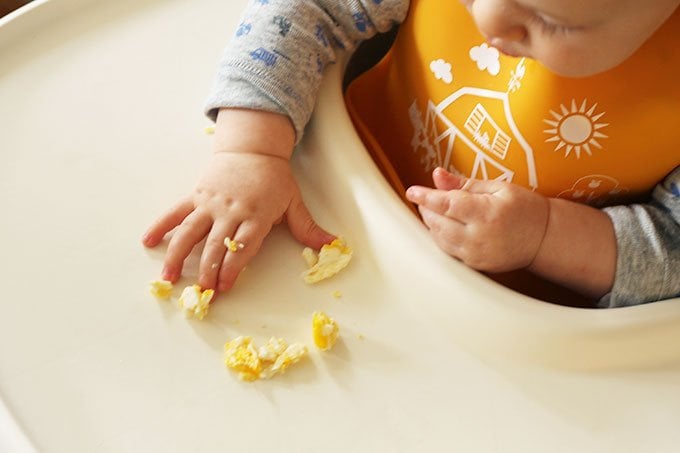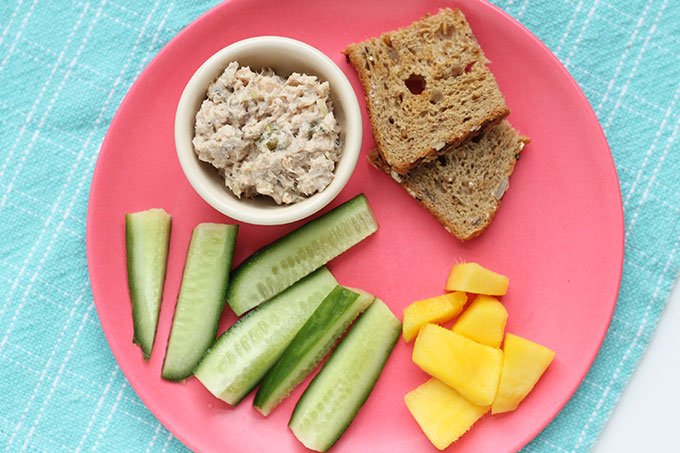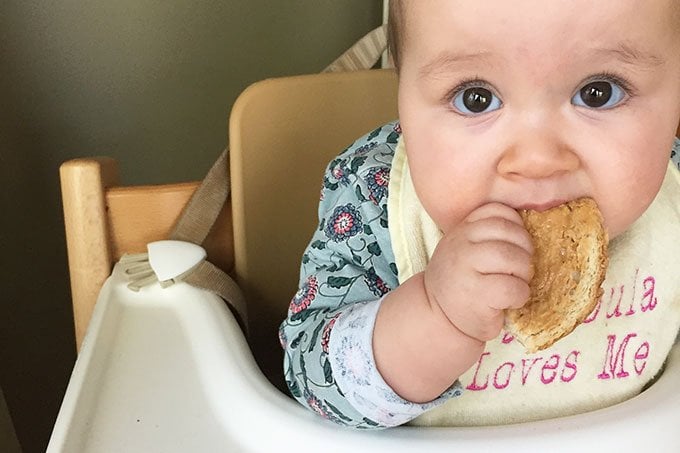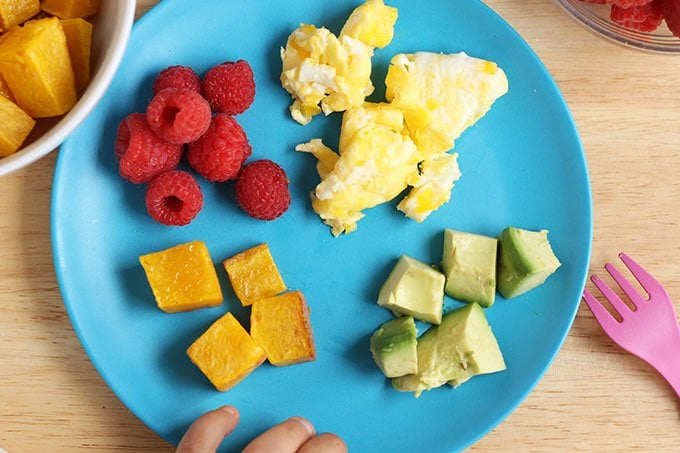[ad_1]
Serving healthy fat foods to kids is vital for their growth and development, especially for those age two and under. Plus, they can have all sort of positive benefits including aiding digestion and helping us stay full and satisfied. Read on to learn more about good fats, where to find them, and kid-friendly ways to serve them.
Healthy Fat Foods
Adding more foods with healthy fats to your family’s food can help round out a healthy diet and provide nutrients to help with growth, brain development, skin health, and digestion.
Generally speaking, the key with fats is to focus on the healthier ones—which generally speaking, are the ones found naturally in foods like nuts, seeds, plants, fish, and grass-fed meats—and less on ones that show up in packaged foods.
This follows my general approach to feeding: Surround your family with more fresh, whole foods, and less packaged snack foods ones when possible, but allow all foods in moderation.
It can help to think of this in terms of simply adding foods to the mix of what we already eat.
It’s all about proportions.
Why do kids need healthy fats?
All toddlers, not just the ones who are lower on the growth curve, need fat in their diet to help them grow. In fact, fats should make up half of a baby and toddler’s daily calories until the age of two for proper brain and body development, so it’s important to include healthier fats at most meals and snacks.
But like all things with feeding toddlers, this can get tricky if (ahem…when) your little one has strong opinions about what they eat! And, of course, it’s also too easy for us parents to obsess about whether our kids are getting the nutrients they need.
Types of Fat
There are three main types of fats that you’ll see listed on food packages. Here’s what each is:
1. Unsaturated Fat
From the Harvard School of Public Health: “Unsaturated fats, which are liquid at room temperature, are considered beneficial fats because they can improve blood cholesterol levels, ease inflammation, stabilize heart rhythms, and play a number of other beneficial roles.
Unsaturated fats are predominantly found in foods from plants, such as vegetable oils, nuts, and seeds.” Eating these unsaturated fats has been shown to lower heart disease risk and increase protective HDL cholesterol.
- Monounsaturated fats are found in olive, peanut, and canola oils, avocados, nuts such as almonds, hazelnuts, and pecans and seeds including pumpkin and sesame seeds.
- Polyunsaturated fats are found in sunflower, corn, soybean, and flaxseed oils, walnuts, flaxseeds, fish, and canola oil (which also has monounsaturated fats).
2. Saturated Fat
All foods that have fat have a mix of types, so even the healthier ones mentioned above can have some saturated fats. That said, saturated fat is mainly found in animal foods, but you’ll also find it in plant foods like coconut, palm oil, and palm kernel oil.
Some of the health claims made about this type of fat have overreached, from what I can tell, so while it can be good to replace some saturated fats with unsaturated fats, it’s also okay to eat some of both types. Again, it’s about proportion here.
3. Trans Fat
Trans fatty acids, or trans fats, are made by heating liquid vegetable oils in a process called hydrogenation. This process helps oils be shelf stable longer and withstand heat repeatedly (which is why it’s often used for frying in restaurants). You’ll see it on labels as “partially hydrogenated” oil.
Trans fats can be worrisome since it’s been shown to raise the more harmful type of cholesterol and lower the good kind, cause inflammation and increase the risk for heart disease. (Read more here.)
What are good fats?
The “good” ones are the monounsaturated and polyunsaturated fats, so you’ll want more of those in your diet proportionally than saturated or trans fat.
Beyond that, I like to focus on actual foods, rather than tunnel-visioning on macronutrients, since it’s much easier to wrap my head around what to buy at the store.
I don’t have to remember the difference between omega 3 and omega 6 fatty acids, or what ALA means, this way, I just remember to regularly offer foods like avocado, hemp seeds, and wild salmon.
Omega Fatty Acids
Omega-3 fats are a type of polyunsaturated fats that we must get from food. A good way to get enough of these is to aim to eat fish 2-3 times per week, and/or to incorporate flaxseed, walnuts, and canola or soybean oil.
We add ground flaxseed to oatmeal and muffins, crush walnuts and add them on top of pasta and salads (for the adults anyway!), and try fish all sorts of ways to see what the kids might like.
Healthy Fats Benefits
Fats help our bodies absorb crucial nutrients like Vitamins A, D, E, and K, and are key in building our central nervous systems. Eating them regularly can help keep constipation at bay.
They can also make food taste better, which can help the kids actually eat it, and keep us full longer with more balanced energy.
Good Sources of Fats
To easily include these healthy fats in your diet, aim to incorporate nuts, seeds, avocado, wild fish, and grass-fed meats. And full fat dairy can be healthy fat foods for kids too, especially the kind that’s made with milk from cow’s that have been grass-fed (since grass has more healthy omega fatty acids than corn).
There’s also a new applesauce brand that has healthy fats added.
TIP: You may see milk that’s been fortified with healthy fats at the store, particularly from brands like Horizon. If you feel like you aren’t easily adding other source of fats to your kids diets, this can be a good option but it’s not necessary and will cost more.
What if our pediatrician says my toddler needs to gain weight?
It seems common for pediatricians to tell parents that they need to “fatten up” their toddler, so if that happens the first thing I’d check is whether your child is on their own growth curve.
If your little one has always been in the 5% percentile for weight and haven’t suddenly dropped off their curve, they might be growing exactly how they are meant to.
And if they eat and drink well, have lots of energy, and your gut tells you that they’re genetics are at play with their body type—maybe they look exactly like you did as a child—then I personally wouldn’t go too far off the ledge with adding extra fats into all of their food.
Talk to your doctor about your specific concerns if this is a situation you find yourself in. And remember that the growth curve goes from 0-100, and kids that fall anywhere on that curve can be healthy.
TIP: Learn more about foods to help kids gain weight.
Foods High in Good Fat
Here’s a list of foods that are higher in beneficial fats that you can start to try to include in your family’s diet, if you aren’t already.
- Almond butter
- Avocado
- Avocado oil
- Beef (grass-fed if possible)
- Butter
- Cashew butter
- Cheese (shredded, sliced, cheese sticks)
- Chia seeds
- Chicken, dark meat
- Coconut, unsweetened shredded
- Coconut milk
- Coconut cream
- Coconut oil
- Cottage cheese, 4% fat
- Eggs
- Flaxseeds, ground
- Hemp seeds
- Kefir, full fat
- Lamb
- Milk, whole
- Olive oil
- Peanut butter
- Sesame oil
- Sunflower seeds
- Sunflower seed butter
- Yogurt, full-fat plain
- Walnuts
- Wild salmon, fresh, frozen or canned
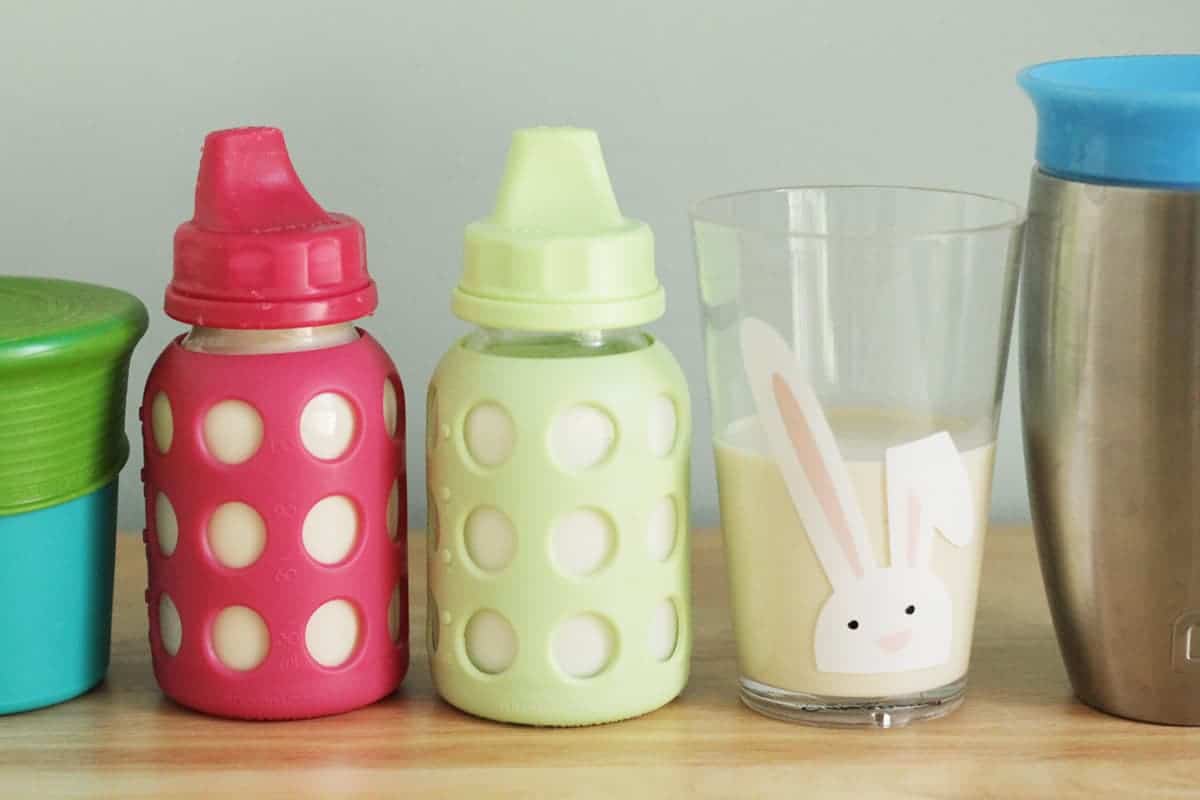
Should I switch to low-fat milk after my child turns two?
Schools and many pediatricians still recommend switching to low-fat or fat-free milk after a child turns two, but you may not want to do that. A 2016 study found that kids who drank milk with higher fat content had higher levels of Vitamin D and lower BMIs.
This explanation from statistician and author Emily Oster is a helpful read too:
Increasingly, the correlational evidence suggests that kids who drink whole milk are actually less likely to be overweight than those who drink reduced fat. A 2020 meta-analysis of 28 studies found that 10 of them saw no association between milk fat percentage and childhood weight, and the other 18 found children who drank higher fat milk had lower weight. Averaging together, the risk of being overweight was reduced by 40% with whole milk.
Just something to keep in mind…in addition to whole milk tasting better (in my opinion anyway!).
How much healthy fat should my child eat?
I aim to include a source of fat at most meals and snacks to help keep the kids full and provide plenty of chances for them to get a lot of nutrition. So we serve dairy, meat, and fish regularly, and then I garnish foods with some of the other foods on the good fat list above.
So I add hemp seeds or avocado to smoothies, stir almond butter into oatmeal, add coconut milk to roasted sweet potatoes, add cheese to veggies, roast vegetables in olive oil, and more.
Of course, you don’t need to stock all of these foods in your house at once and there will be days when your toddler only wants the peanut butter or cheese or yogurt and that too is okay.
TIP: Try to keep the bigger picture in mind and think of their intake over the course of a week, rather than bite-by-bite. Buy different foods at the store from week to week, like chia seeds one week and sunflower seeds the next, to easily add in some variation.
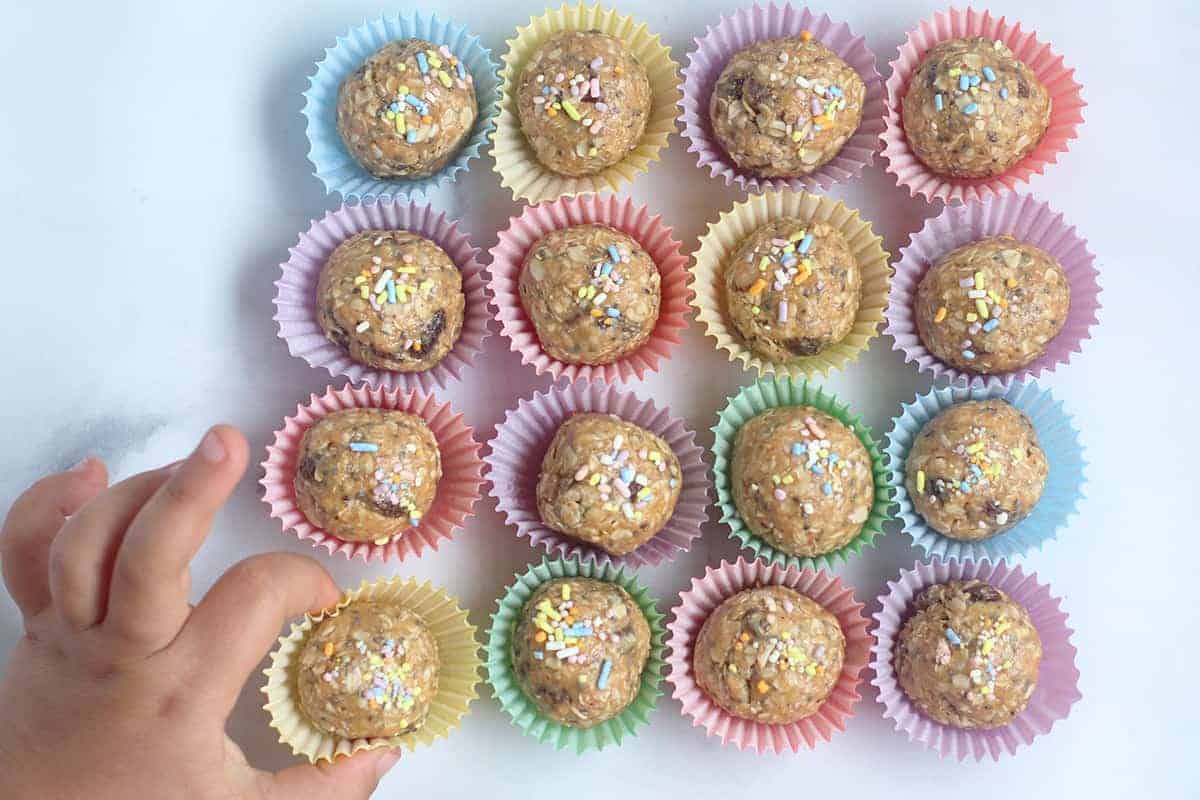
Recipes to Try
Here are some recipes that I particularly love that include a nice dose of healthy fats.
These no-bake bites taste like a cross between oatmeal raisin and peanut butter cookie dough. I use natural creamy peanut butter (like the kind from Smuckers) and it works really well. (Recipe updated slightly in June 2021 to ensure the best texture.)

You can easily double (or triple!) the recipe to make more servings. It uses a 1 to 1 ratio of yogurt to applesauce so you can easily scale it up. Mix these up the night before you plan to serve them.
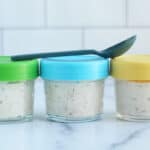
These simple blender muffins pack a serious nutrition punch and are dairy-free, with a nut-free option. I prefer the flavor of these once they are fully cooled and chilled in the fridge.
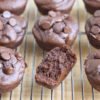
These soft breakfast egg cups are packed with protein and vitamins—and can be made ahead of time! Add any veggie you like, whether carrots, butternut squash, broccoli, or spinach.
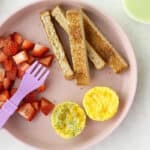
Made with just a handful of pantry staples, these No-Bake Peanut Butter Cookies are both delicious and seriously satisfying. Make them to share with the kids!
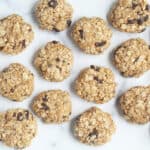
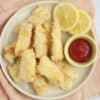
These tender fish cakes make a quick and easy pantry meal when you haven’t planned ahead for dinner. Recipe updated slightly to ensure moistness in June 2021.
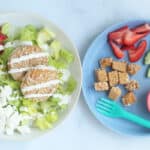
We use homemade relish in this recipe but you can use any that you like the flavor of.
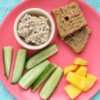
This fluffy peanut butter puree should have the consistency of yogurt and be easy for a baby to move around in their mouths. Remember to offer just a little at a time.
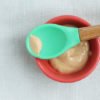
This makes two toddler-size servings or one serving for a hungrier smoothie-lover!
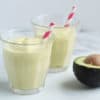
This is best on the day you make it, though you can store it in the fridge for 24 hours in an airtight container. If any liquid separates out, simply stir it up.
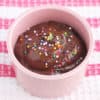
Any pasta shape works in this recipe, so choose your family’s favorite! Omit the garlic if you think the flavor might be too strong for your people. My kids prefer this without the garlic. I like it with it for myself!
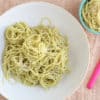
This is a nutritious smoothie to serve any day, though it’s a great way to get that digestive system going if needed.

You May Also Like
This is not meant to be a substitute for medical advice. Always contact your pediatrician as needed.
This post was first published February 2018.
[ad_2]
Source link


